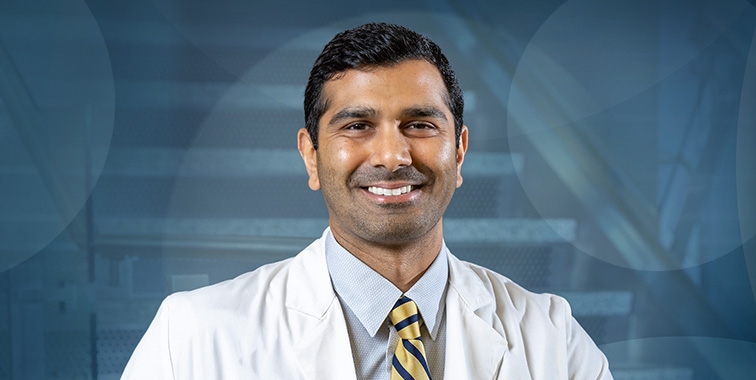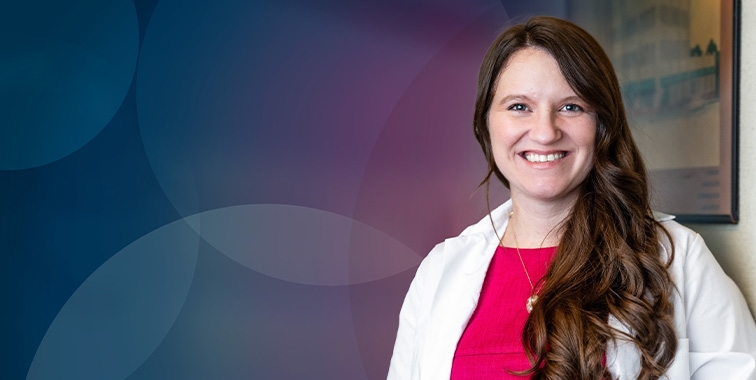Enjoy Life Despite Spine Conditions
- Category: In The News
- Posted On:

For a rising number of adults, advanced scoliosis—commonly known as a curvature or rotation of the spine—is limiting their activity and causing pain, difficulty breathing and even embarrassment.
But Orthopedic Surgeon Matthew C. Lafleur, MD, of North Oaks Orthopedic Specialty Center shares that there is good news for many of the 6 million Americans who have spine conditions like advanced scoliosis. Although many adults with scoliosis will never need treatment, those who do may benefit from spinal surgery to correct the deformity.
According to the National Scoliosis Foundation, scoliosis can run in families. While people of all ages can develop the condition, it usually appears between the ages of 10 and 15. Those who are sedentary and overweight are more likely to develop scoliosis.
If you suffer from scoliosis, you have plenty of company. Dr. Lafleur notes that adult scoliosis is becoming increasingly common in senior adults, showing up around age 60 and affecting more than 30 percent of patients over 70 years old.
Why the increase in adult scoliosis? Dr. Lafleur points out that degenerative arthritis is “the main culprit” now that people are living longer than ever before.
“Today’s seniors are more physically active than previous generations. I encourage them to continue their exercise routines under physician guidance. Seniors are more likely to seek help for back pain than to pass it off as a normal part of aging, which may be the reason we are seeing more adult scoliosis,” Dr. Lafleur explains.
Most adults with scoliosis can live a normal, active life without difficulty. For those with more advanced cases, help is available. Scoliosis surgery to reduce the severity of the spinal curve, relieve pain and to prevent the curvature from getting worse may be recommended.
“Treatment for adults with scoliosis depends on the type of scoliosis and their symptoms. If no disabling symptoms are present, we usually monitor the patient with periodic physical exams. To help alleviate pain, we sometimes recommend medications or exercises to strengthen muscles supporting the back. However, for those with disabling pain in the back or legs, deformity correction may be an option,” Dr. Lafleur shares.
Types of scoliosis in adults include: congenital (caused at birth); idiopathic (occurs for no apparent reason); and neuromuscular (developing as the result of another condition like cerebral palsy or physical trauma).
Some adults with scoliosis have curvature that began during their teen years and slowly increased as they aged. The curve can be located anywhere in the spine. These adults may or may not have received treatments for their scoliosis when they were young.
Other adults have spinal curvature that began later in life due to wear and tear on the spine or conditions, such as osteoporosis or osteoarthritis. These conditions cause deterioration of the discs in the back and may often lead to degenerative scoliosis. This condition usually occurs in the lower, or lumbar, part of the spine. It can cause back pain, stiffness and numbness or shooting pains down the legs. Individuals with severe cases of degenerative scoliosis may experience disabling symptoms and have a hard time accomplishing daily activities like bathing, dressing or even walking. It also can cause a gradual, progressive leaning forward deformity, leading to pain and inability to stand for long periods.
The lumbar vertebra are the bones that make up the lower part of the spine. These bones are cushioned by discs that act as shock absorbers for the spine. Lumbar fusion replaces the disc with bone, which eventually heals in place. The bone is held in place by screws or rods as it heals. This type of surgery avoids disturbing the back muscles, allowing for an easier recovery. It straightens the spine in a safe manner, balances the torso and pelvic areas and can maintain the correction long term.
Although pain isn’t a common symptom, there are several warning signs that may indicate you have scoliosis. If you notice any of these signs and symptoms, you should see a doctor:
For more information, contact North Oaks Orthopedic Specialty Center at (985) 230-2663 in Hammond or (225) 686-4900 in Livingston.
But Orthopedic Surgeon Matthew C. Lafleur, MD, of North Oaks Orthopedic Specialty Center shares that there is good news for many of the 6 million Americans who have spine conditions like advanced scoliosis. Although many adults with scoliosis will never need treatment, those who do may benefit from spinal surgery to correct the deformity.
According to the National Scoliosis Foundation, scoliosis can run in families. While people of all ages can develop the condition, it usually appears between the ages of 10 and 15. Those who are sedentary and overweight are more likely to develop scoliosis.
If you suffer from scoliosis, you have plenty of company. Dr. Lafleur notes that adult scoliosis is becoming increasingly common in senior adults, showing up around age 60 and affecting more than 30 percent of patients over 70 years old.
Why the increase in adult scoliosis? Dr. Lafleur points out that degenerative arthritis is “the main culprit” now that people are living longer than ever before.
“Today’s seniors are more physically active than previous generations. I encourage them to continue their exercise routines under physician guidance. Seniors are more likely to seek help for back pain than to pass it off as a normal part of aging, which may be the reason we are seeing more adult scoliosis,” Dr. Lafleur explains.
Most adults with scoliosis can live a normal, active life without difficulty. For those with more advanced cases, help is available. Scoliosis surgery to reduce the severity of the spinal curve, relieve pain and to prevent the curvature from getting worse may be recommended.
“Treatment for adults with scoliosis depends on the type of scoliosis and their symptoms. If no disabling symptoms are present, we usually monitor the patient with periodic physical exams. To help alleviate pain, we sometimes recommend medications or exercises to strengthen muscles supporting the back. However, for those with disabling pain in the back or legs, deformity correction may be an option,” Dr. Lafleur shares.
Types of scoliosis in adults include: congenital (caused at birth); idiopathic (occurs for no apparent reason); and neuromuscular (developing as the result of another condition like cerebral palsy or physical trauma).
Some adults with scoliosis have curvature that began during their teen years and slowly increased as they aged. The curve can be located anywhere in the spine. These adults may or may not have received treatments for their scoliosis when they were young.
Other adults have spinal curvature that began later in life due to wear and tear on the spine or conditions, such as osteoporosis or osteoarthritis. These conditions cause deterioration of the discs in the back and may often lead to degenerative scoliosis. This condition usually occurs in the lower, or lumbar, part of the spine. It can cause back pain, stiffness and numbness or shooting pains down the legs. Individuals with severe cases of degenerative scoliosis may experience disabling symptoms and have a hard time accomplishing daily activities like bathing, dressing or even walking. It also can cause a gradual, progressive leaning forward deformity, leading to pain and inability to stand for long periods.
The lumbar vertebra are the bones that make up the lower part of the spine. These bones are cushioned by discs that act as shock absorbers for the spine. Lumbar fusion replaces the disc with bone, which eventually heals in place. The bone is held in place by screws or rods as it heals. This type of surgery avoids disturbing the back muscles, allowing for an easier recovery. It straightens the spine in a safe manner, balances the torso and pelvic areas and can maintain the correction long term.
Although pain isn’t a common symptom, there are several warning signs that may indicate you have scoliosis. If you notice any of these signs and symptoms, you should see a doctor:
- Increase in curvature
- Uneven shoulders
- One shoulder blade that appears more prominent than the other
- Uneven waist
- One hip higher than the other.
For more information, contact North Oaks Orthopedic Specialty Center at (985) 230-2663 in Hammond or (225) 686-4900 in Livingston.




[1].jpg)